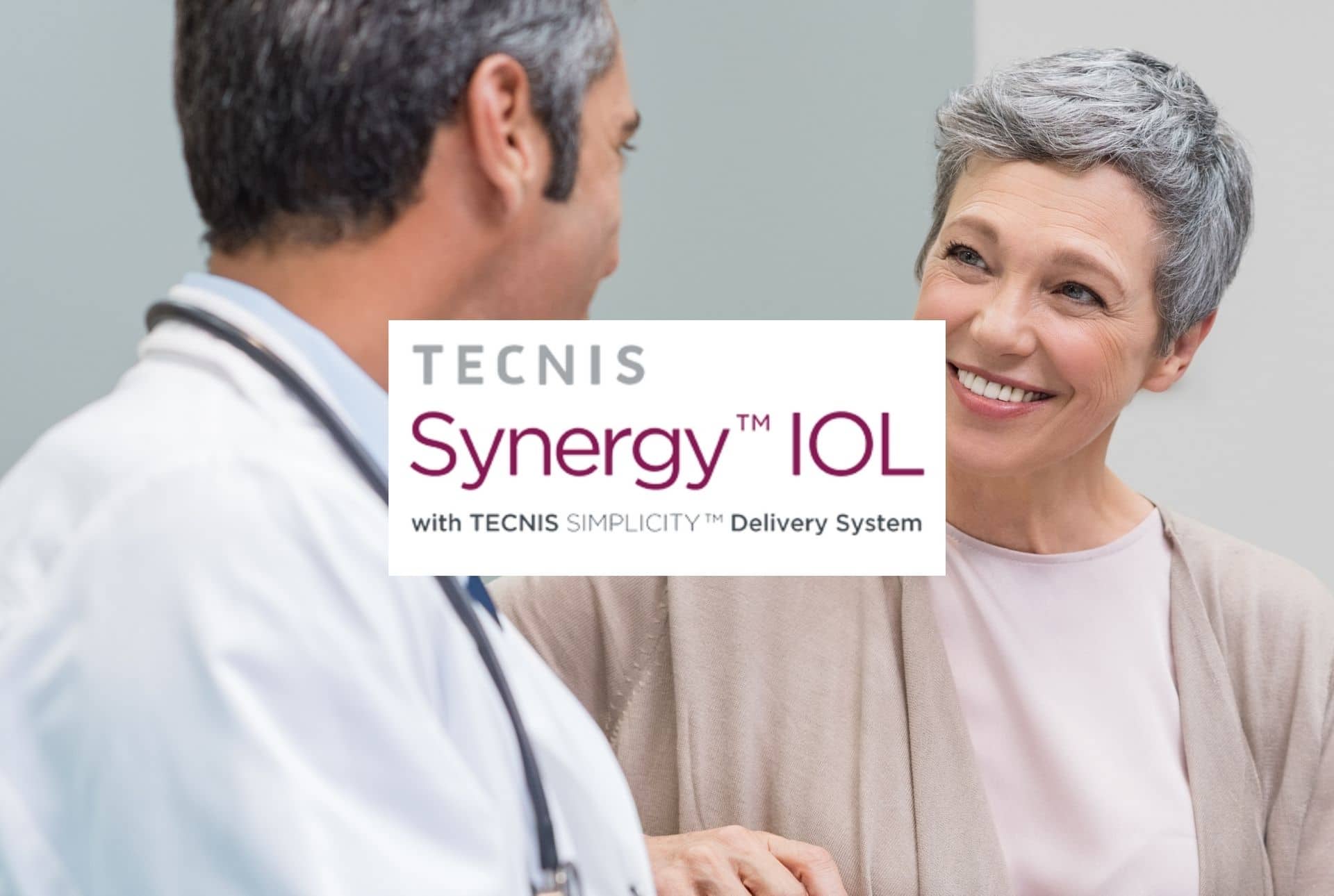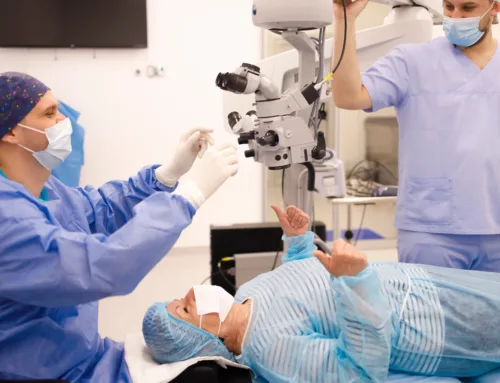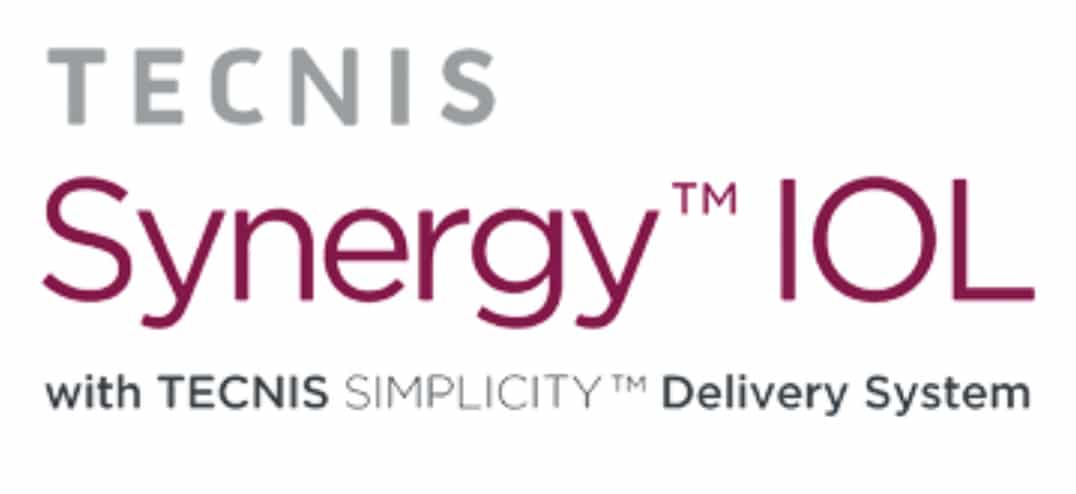
Welcome to our “Complete Guide to the Synergy Intraocular Lens (IOL) implant. Choosing the right lens implant is a decision that can enhance your vision and lifestyle for the rest of your life.
In this section, we’re going to discuss the Synergy IOL, and give you a strong foundation of knowledge as you decide with your surgeon which implant is right for you.
Nowadays there are several excellent implant options to choose from. There’s no one-size-fits-all implant that’s the best for everyone. Your choice of implant depends on your eyes and your lifestyle and should be made in consultation with an expert cataract surgeon.
In this section we’ll cover the following:
- What is the Synergy IOL?
- How does the Synergy IOL work?
- Are there any patients who should not get the Synergy IOL?
- How does the Synergy IOL Perform?
- Summary
Before we get started, please remember that the information and educational resources provided on our website are not a substitute for the personalized medical advice of a skilled doctor.
With that out of the way… let’s get started!
What is the Synergy IOL?
On May 6, 2021, Johnson & Johnson Vision announced that the U.S. Food and Drug Administration approved the Tecnis Synergy intraocular lens implant (IOL). The Synergy IOL is designed as an “Extended Range of Vision” IOL to achieve independence from glasses for distance, intermediate, and near-range vision.
How does the Synergy lens implant work?
The Synergy IOL incorporates proprietary diffractive technology on its back surface that is a combination of the multifocal and “extended depth of focus” technologies from previous models of IOLs. This is designed to provide a range of vision from distance to intermediate to near.
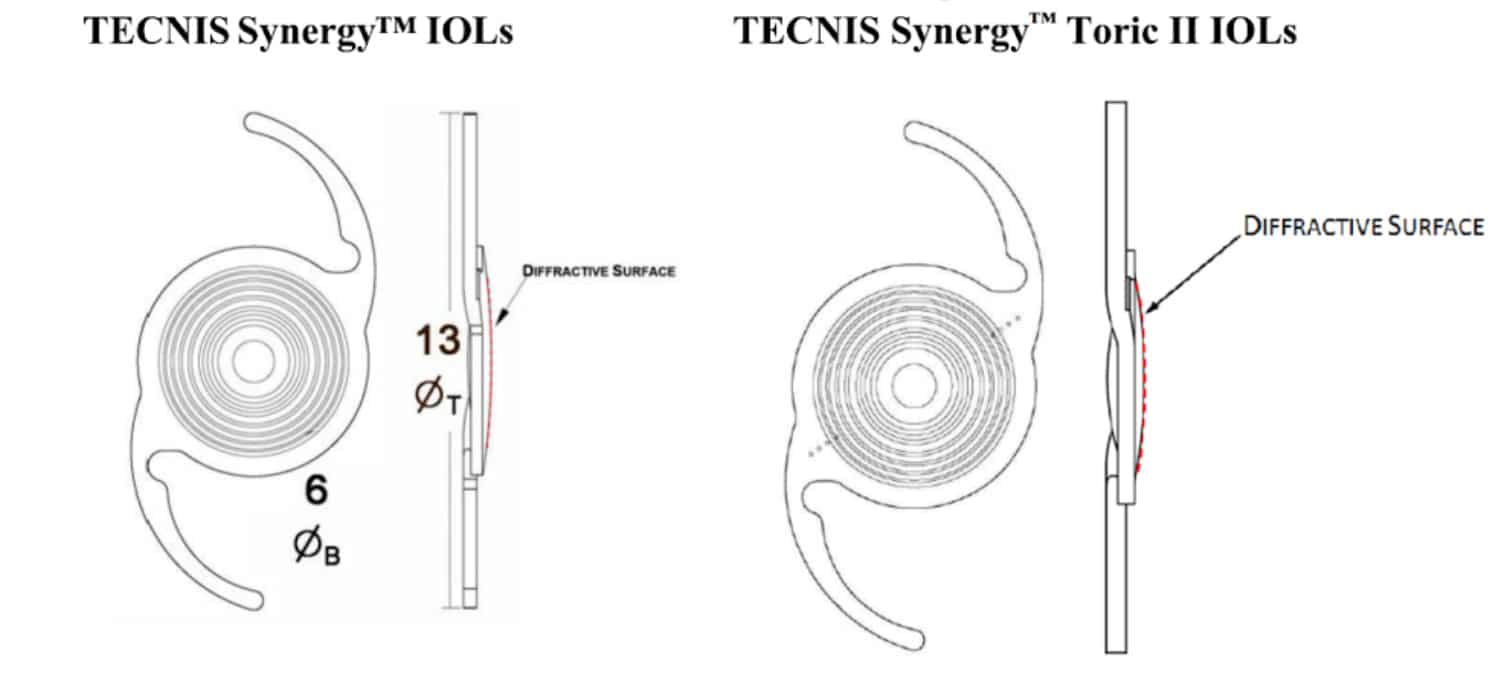
The lens design has a series of concentric rings that cause light to “diffract”, or scatter, in a controlled way that causes light to focus for distance, intermediate, and near focal ranges. These rings can also cause some light to scatter in a manner that causes glare, halos, and starbursts. Most patients are not very bothered by these symptoms… but some are. In the sections below we’ll get into the details of how the lenses performed for vision at distance, intermediate, and near ranges… and we’ll also review the clinical trial data on how patients experienced glare, halos, and starburst symptoms.
Are there any patients who should not get the Synergy IOL?
Before discussing who might do well with the Synergy IOL, there are some general guidelines that Johnson & Johnson gives for those who may not do well with a Synergy IOL. These guidelines are also applicable to most other Multifocal and “Extended Depth of Focus” implants, though, there may be exceptions, such as in cataracts with diabetes when diabetes has resulted in retinal disease:
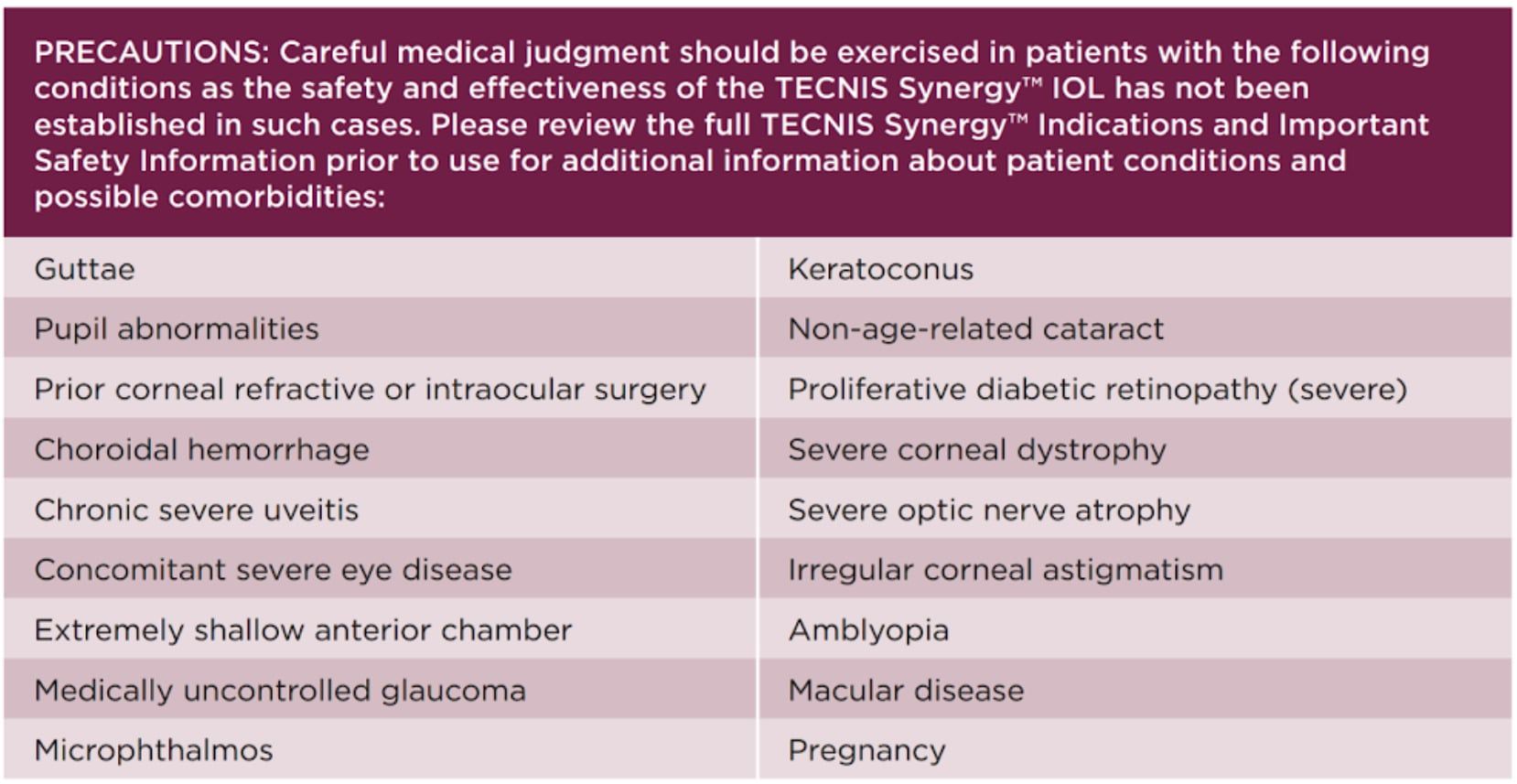
How does the Synergy IOL Perform?
To illustrate how the Synergy IOL performs and help guide your expectations, let’s review the FDA clinical study of the Synergy implant.
To summarize the FDA Synergy Clinical Trial, we’ll review the following:
- Study Design
- Distance Vision Outcomes
- Intermediate Vision Outcomes
- Near Vision Outcomes
- Glare, Halos, Starburst Outcomes
- How many patients achieved complete freedom from glasses?
Study Design
The clinical trial took place in 2019 and included 272 patients at 15 investigational sites. The study was a prospective, multicenter, three-way blinded, randomized study of the safety and effectiveness of the Synergy IOL compared to a control monofocal IOL, the ZCB00. (Note: In our opinion, the ZCB00 is an excellent monofocal IOL, and one of the most common monofocal IOL’s used in the United States at the time of the clinical trial.)
Patients were randomized to receive either the Synergy IOL or the control monofocal IOL. Patients were followed for 6 months. The outcomes presented below were from each patient’s 6-month follow-up visit.
Distance Vision Outcomes
The table below shows the data for the Synergy versus the Monofocal control lens for distance vision. “Uncorrected” refers to patients’ distance vision without glasses, whereas “best corrected” refers to how good a patient’s vision was with glasses.
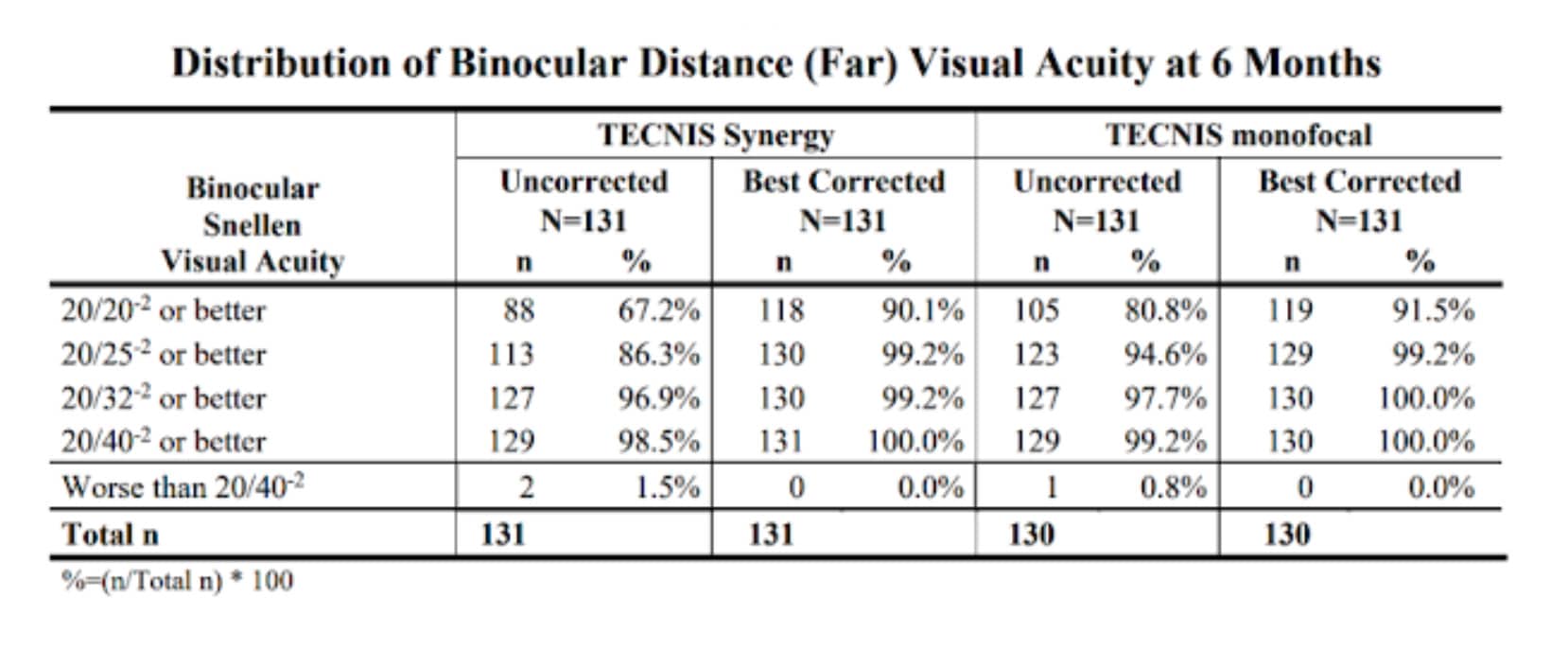
Intermediate Vision Outcomes
In the table below, we show the data for the Synergy versus the Monofocal control lens for Intermediate-range vision. “Intermediate” refers to 66cm or approximately 26 inches. Examples of intermediate-range vision may include mid-range vision, such as when looking at a computer, dashboard, or shelf at the store.
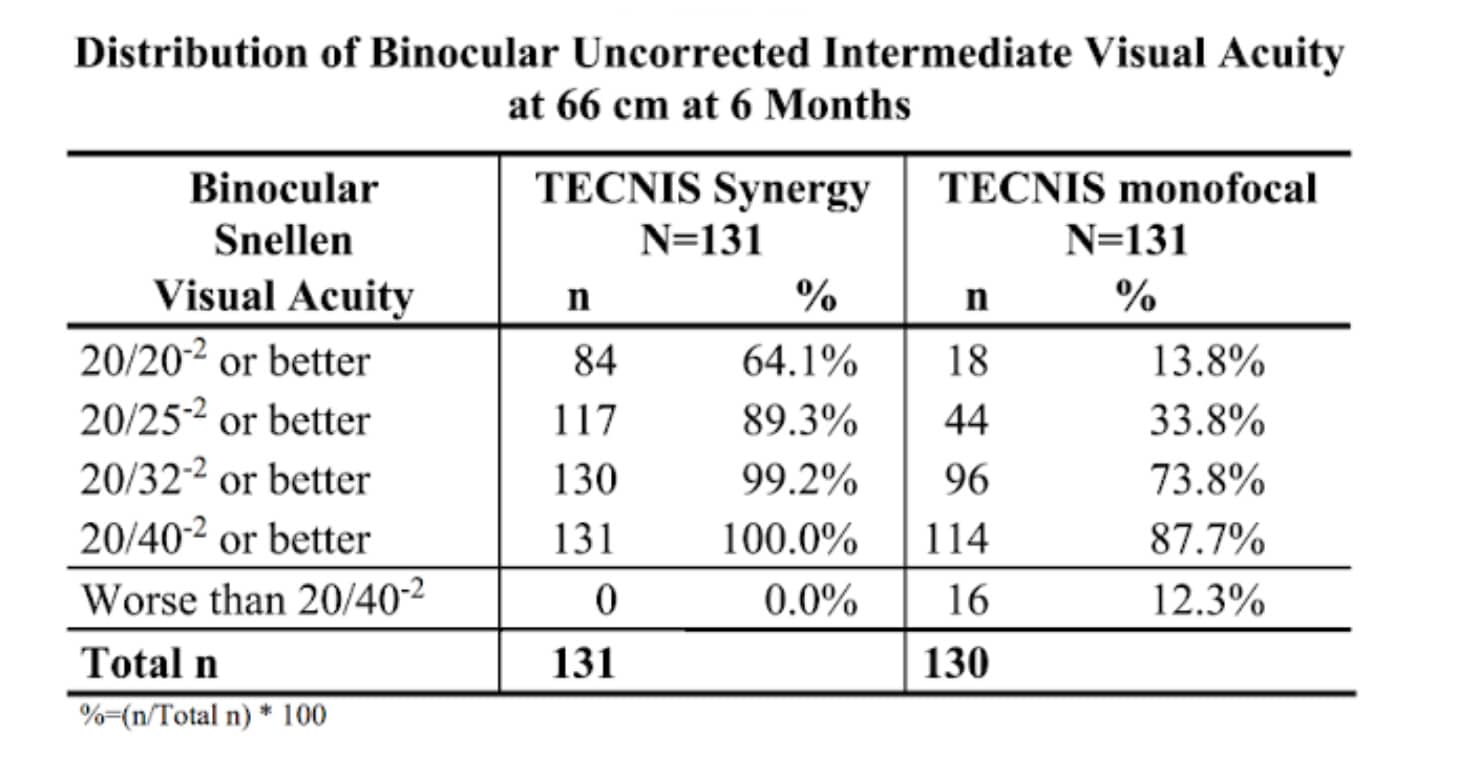
As you can see there is a significant improvement in Uncorrected Intermediate vision for patients who received the Synergy IOL compared to the monofocal control IOL.
Near Vision Outcomes
The table below presents the data for the Synergy versus the Monofocal control lens for Near range vision. “Near” refers to 40cm or approximately 16 inches. Examples of near-range vision may include magazine or book-range reading vision.
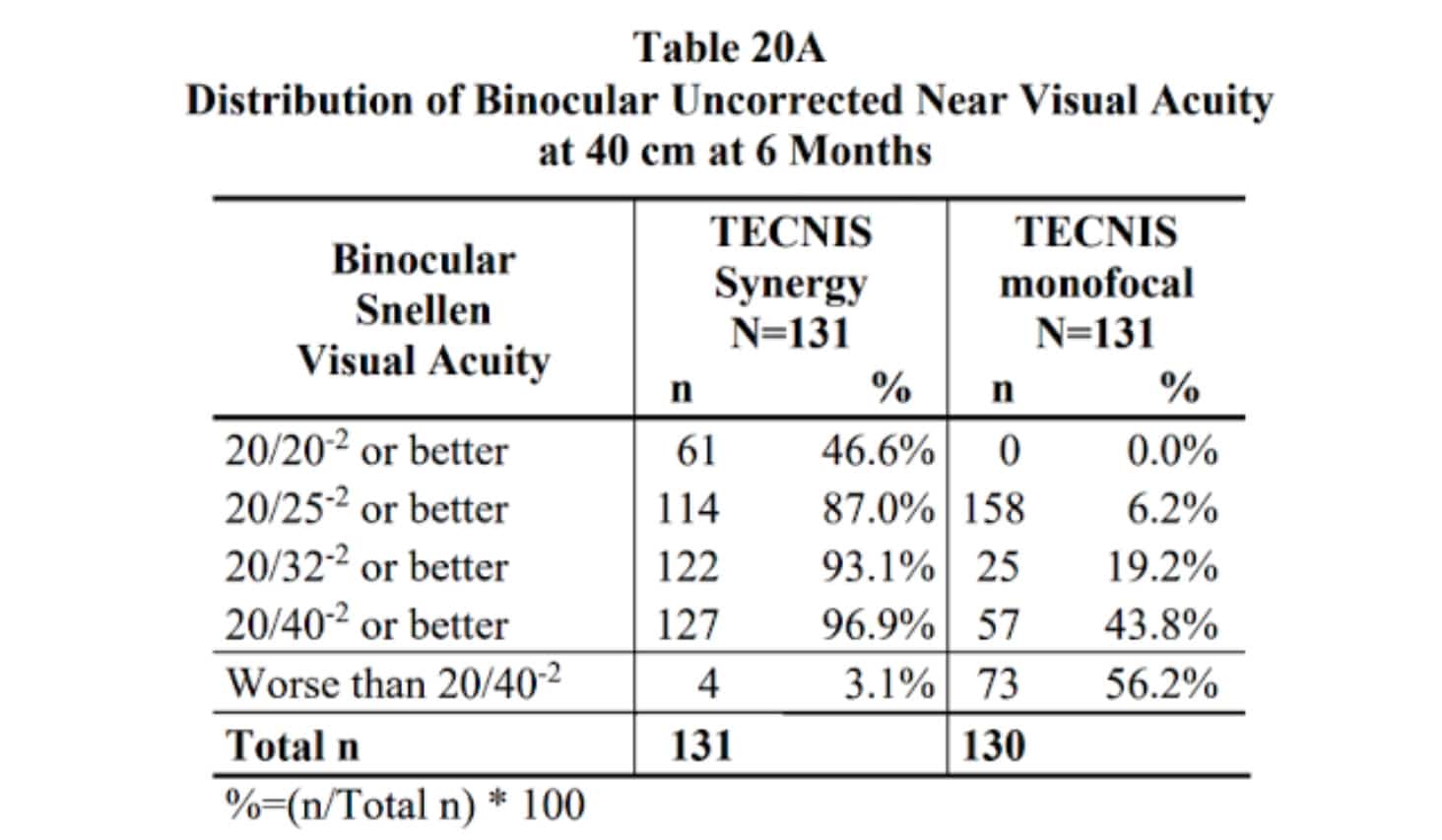
Once again, it’s clear that the Synergy IOL performs much better than the Monofocal control IOL for Uncorrected Near vision.
Glare, Halos, Starburst Outcomes
Finally, let’s look at glare, halos, and starbursts. As we often say, there is no one-size-fits-all best IOL, and there are trade-offs associated with every lens on the market today. The trade-off associated with many multifocal and “Extended Depth of Focus” implants is that, while they achieve improved uncorrected Intermediate and/or Near vision, this benefit may come with the unwanted side effect of glare, halos, and starbursts. Let’s see how Synergy performed in this regard:
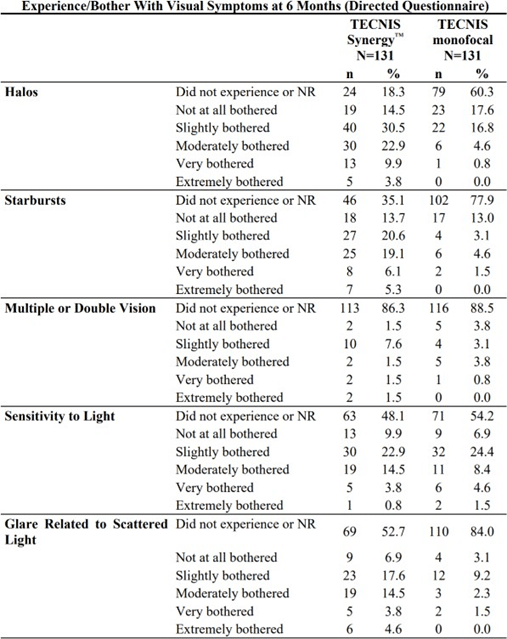
While most were either slightly bothered, not bothered, or did not experience these unwanted visual symptoms, more patients in the Synergy group were either ‘very bothered’ or ‘extremely bothered’ by some of these symptoms, such as halos and starbursts.
If glare and halos are a significant concern for you, other implants may be worth considering, such as the Eyhance IOL and the Vivity IOL. These IOLs typically do not deliver as much near vision as Synergy, but the risk of glare and halos may be less.
How many patients achieved complete freedom from glasses?
The most common reason many patients elect Multifocal or “Extended Depth of Focus” implants is to achieve freedom from glasses. Many IOLs attempt to reduce patients’ dependence on glasses for distance vision and either Near or Intermediate-range vision… but often not all of these ranges. The Synergy lens attempts to achieve independence for all of these ranges…. So how does it do?
At the end of the study, patients were asked how often they reported wearing glasses or contact lenses…. Over 87% of patients reported wearing glasses “None of the time” for all ranges of vision. That is, 115 out of 131 patients who received Synergy implants reported being glasses-free 6 months after their surgery. This compares to only 3% in the control group.
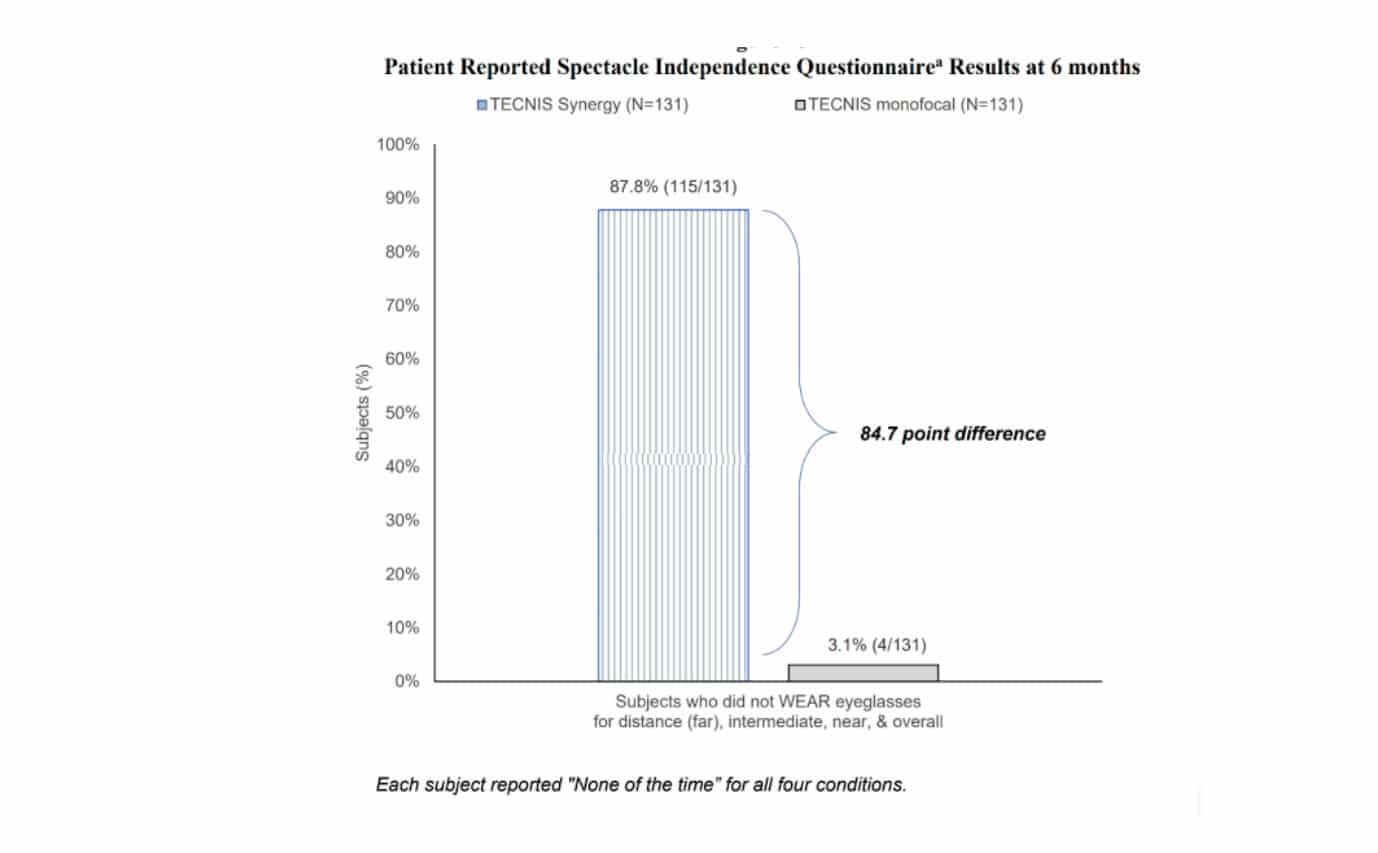
What is the Synergy IOL price?
Because the Synergy lens implant treats presbyopia, which is a non-covered service, cataract surgery with this lens implant is not fully covered by medical insurance. Medical insurance will still cover other aspects of your cataract surgery, but you should expect an out-of-pocket expense if you select the Synergy IOL.
Does the Synergy IOL fix astigmatism?
Yes… It can. The Synergy IOL comes in both a toric implant and a non-toric implant. The selection of which IOL is best for you will be based on measurements your surgeon takes of your cornea. If your cornea has a certain amount of astigmatism, the toric version may be a better option for you.
Synergy lens vs Panoptix – Which IOL is better?
This is a close call, as these lens implants perform similarly to one another. Some surgeons find their outcomes are better with Synergy, while others prefer PanOptix. The combination of measurement devices and surgical techniques that an individual surgeon uses may account for some preferring one of these over the other. In these situations, you may want to consider trusting your surgeon’s judgment, experience, and advice, rather than pushing for one of these instead of the other. Most patients who are good candidates for one are also good candidates for the other.
Summary:
Overall, the Synergy lens is an outstanding addition to the toolbox of cataract surgeons, and it will make many, many patients very happy by achieving complete freedom from glasses. We all want a lens implant that works perfectly 100% of the time with no glare, halos, or unwanted visual symptoms. While the Synergy IOL isn’t perfect, its clinical trial results show that it’s proven to be highly effective in achieving complete independence from glasses at all ranges of vision for the vast majority of patients.
Sources:
- FDA Summary of Safety and Effectiveness Data (SSED) for the TECNIS Synergy™ IOL, Model ZFR00V • TECNIS Synergy™ Toric II IOL, Models ZFW150, ZFW225, ZFW300, ZFW375, TECNIS Synergy™ IOL with TECNIS Simplicity™ Delivery System, Model DFR00V, TECNIS Synergy™ Toric II IOL with TECNIS Simplicity™ Delivery System, Model DFW150, DFW225, DFW300, DFW375. Available June 15, 2021: https://www.accessdata.fda.gov/cdrh_docs/pdf/P980040S124B.pdf
- Tecnis Synergy IOL “Getting Started Guide”. Johnson & Johnson Surgical Vision, Inc. 2021.

